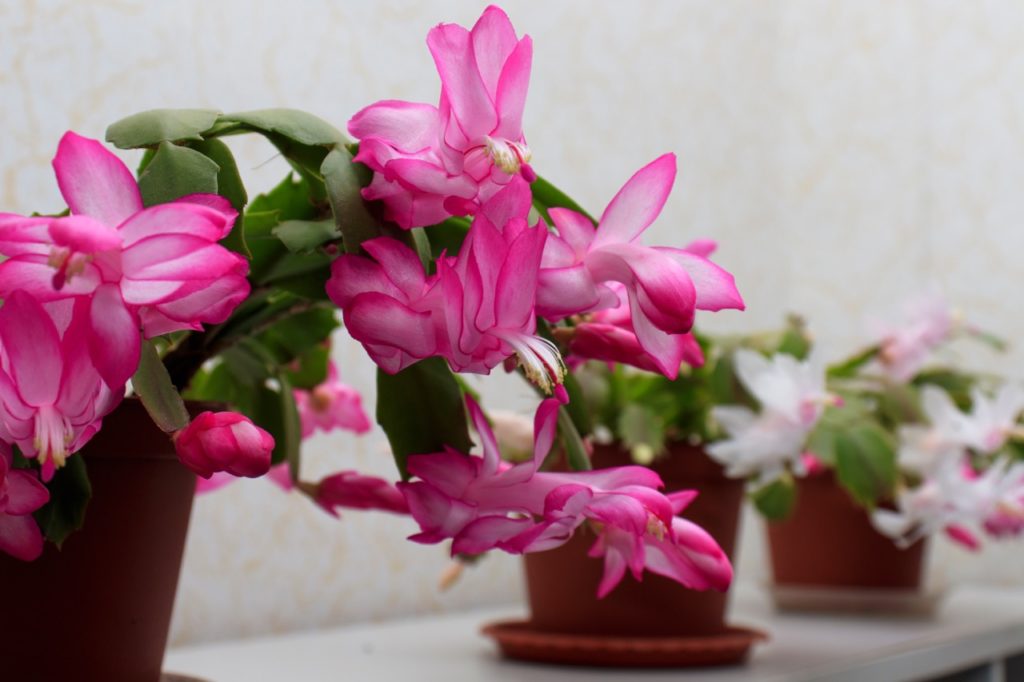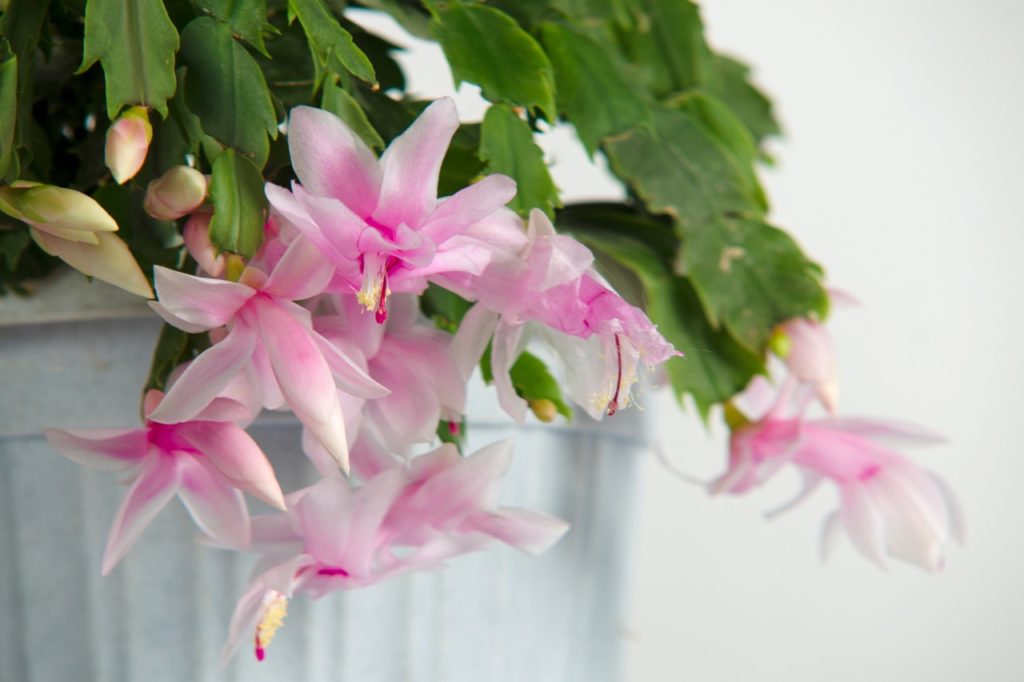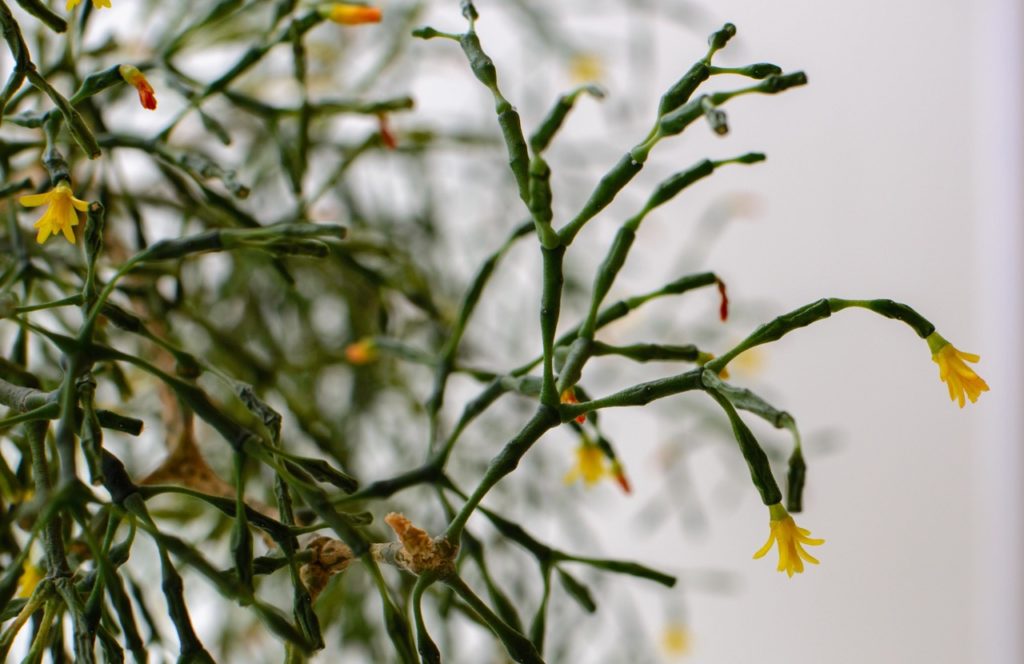Reviewed By COLIN SKELLY

Colin is a Horticulturist and Horticultural Consultant with experience in a range of practical and managerial roles across heritage, commercial and public horticulture. He holds the Royal Horticultural Society’s Master of Horticulture award and has a particular interest in horticultural ecology and naturalistic planting for habitat and climate resilience.
Contributions From DAVID ENNALS

With decades of experience growing cacti and succulents, David is the owner of Coach House Cacti, a specialist seller based in Dorset. He has won multiple Gold medals at various RHS Flower Shows throughout the years, with his achievements featured online. David is also a member of the British Cactus and Succulent Society.

President of the Desert Plant Society of Vancouver, Dirk has been growing cacti and succulents as a hobby since 1983. The society has been active since 1979 and Dirk has played a key role in growing and propagating cacti during this time.

Jane Perrone is a Journalist turned Houseplant Expert who has over 25 years of experience. Jane published a book on Houseplants at the start of 2023 and is the founder of On The Ledge podcast, with more than 250 episodes to date. She is a member of the RHS Advisory Committee on Houseplants.
IN THIS GUIDE
- Expert Chosen Varieties
- 1) Christmas Cactus
- 2) Common Winter Cactus
- 3) Dwarf Turks Cap Cactus
- 4) Orchid Cactus
- 5) Texas Rainbow Cactus
- 6) Klapper’s Hedgehog Cactus
- 7) Scheer’s Hedgehog Cactus
- 8) Black Lace Cactus
- 9) Silver Ball Cactus
- 10) Glory Of Texas
- 11) Peanut Cactus
- 12) Pond Lily Cactus
- 13) Easter Cactus
- 14) Bottle Cactus
- 15) Rose Pincushion
- 16) Owl’s Eye Pincushion
- 17) Ladyfinger Cactus
- 18) Wine-Fragrant Chin Cactus
- 19) Purple Prickly Pear
- 20) Wheel Cactus
- 21) Bishop’s Mitre
- 22) Silver Torch
- 23) Ground Master
- References
Cacti are, of course, associated with spines and thorns, but many varieties produce pretty and vibrant flowers that can really steal the show.
The only question is about cactus flower shapes, sizes and colours!
“There’s cacti that can be grown to match most situations, from windowsill, to conservatory, to outdoors in the summer months,” suggests Master of Horticulture Colin Skelly.
We interviewed several expert cacti growers for this guide, including:
- David Ennals – Owner of Coach House Cacti
- Dirk Himschoot – President of the Desert Plant Society of Vancouver
“The form and variety of cacti make me passionate about growing them,” says David.
“I also love the art of propagation and enjoy the challenge of raising these plants from seed.
“The flowers are uplifting too!”
Cactus plants can be quite fussy and demanding but not when it comes to ongoing care.
What they are particular about is their environmental conditions, including sun, soil and humidity.

An outdoor cactus requires very little care if these are met in a once-and-for-all fashion.
So if you’d like a challenge trying to grow a thorny, spiny plant with lovely flowers in your backyard.
Expert Chosen Varieties
We asked David Ennals to share his favourite varieties of cacti.
“There is such a vast variety of forms, so it completely depends on whatever floats your boat!” says David.
“Most people grow them for their flowers, but I tend to like the ones with strong supination, such as Ferocactus and Stenocactus.”

“However, my favourite genus has to be Mammillaria.”
Dirk also has a soft spot for this genus:
“Mammillaria and Gymnocalycium are my favourite cacti, as they tend to flower at an early age.”
However, he loves growing most cacti varieties for the same reasons.
“When neglected, cacti still survive and look good,” he says.

“They are water friendly but you do not need to water every day. Just once a week in the growing season, once a month in the summer and once every 2-3 months in winter.”
If these choices aren’t enough for you, keep reading for our detailed list below.
I have made it a point to include at least one species from a dozen cactus genera, from which two ‘major’ ones, Mammillaria and Echinocereus, are represented by four varieties each.
I’d encourage you to explore the genus of whatever flowering cactus strikes your fancy.
1) Christmas Cactus

- BOTANICAL NAME: Schlumbergera × buckleyi
- HARDINESS RATING: H1B
- FLOWERS: pink and red
- FLOWERING SEASON(S): winter
- SUNLIGHT: part shade
- SOIL REQUIREMENTS: sand or loam; acidic to neutral pH
- SIZE: 0.1-0.5m in height, 0.5-1m spread
- RHS Award of Garden Merit
The Christmas cactus has overtly jointed segments with its colour varying from a dull greyish-green to a glossy bright green.
This popular plant is a favourite for indoor cultivation.
Initially upright, it spreads and trails like a cascading plant you might see in a hanging basket.
During winter and over the Christmas period, it bears pendent flowers that are tiered and have flared petals in shades of pink, red or purple.
This plant is a recipient of the RHS Award of Garden Merit.
2) Common Winter Cactus

- BOTANICAL NAME: Schlumbergera truncata
- HARDINESS RATING: H1B
- FLOWERS: purple, pink and red
- FLOWERING SEASON(S): autumn / winter
- SUNLIGHT: part shade
- SOIL REQUIREMENTS: sand or loam; acidic to neutral pH
- SIZE: 0.1-0.5m in height, 0.5-1m spread
Somewhat similar to but not the same as the Christmas cactus, the common winter cactus’ segments are less jagged and its thorns are a little smaller.
It too is a top choice for indoor containers and also has a trailing, cascading habit.
In late autumn and early winter, it produces flowers somewhat similar to those of the Christmas Cactus in the shades of pink, orange and red.
3) Dwarf Turks Cap Cactus

- BOTANICAL NAME: Melocactus matanzanus
- HARDINESS RATING: H1B
- FLOWERS: pink
- FLOWERING SEASON(S): summer
- SUNLIGHT: part shade
- SOIL REQUIREMENTS: sand or loam; acidic to neutral pH
- SIZE: 0-0.1m in height, 0-0.1m spread
Only growing to around 8cm tall, Turk’s Cap cactus is spherical and a slow-grower.
It has long, pronounced thorns arranged in a star shape.
In late spring and early summer, it bears a curious flower that is oblong and curved, with floral growth that has fine hairs that resemble fur in hues ranging from mid-pink to a deep red.
This endangered cactus can be a challenge to grow.1Thornton, B. (2007, January). Nichols Turk’s Head Cactus Conservation. Friends of Ironwood Forest. Retrieved March 15, 2023, from https://ironwoodforest.org/about/the-monument/nature/nichols-turks-head-cactus
4) Orchid Cactus

- BOTANICAL NAME: epiphyllum
- HARDINESS RATING: H1B
- FLOWERS: varies
- FLOWERING SEASON(S): spring / summer
- SUNLIGHT: part shade
- SOIL REQUIREMENTS: sand or loam; any pH
- SIZE: 0.1-0.5m in height, 0.5-1m spread
Featuring very long segments with flat, smooth surfaces and capable of growing to great heights, the flowers of the orchid cactus come in various different forms depending on the hybrid.
They flower for only a few days during the end of spring to early summer.
However, the blooms are big, fragrant and come in brilliant tones of pink, yellow and red, so it’s well worth growing despite the short blooming time.
5) Texas Rainbow Cactus

- BOTANICAL NAME: Echinocereus dasyacanthus
- HARDINESS RATING: H1C
- FLOWERS: yellow
- FLOWERING SEASON(S): spring
- SUNLIGHT: full sun
- SOIL REQUIREMENTS: sand or loam; any pH
- SIZE: 0.1-0.5m in height, 0-0.1m spread
Usually having only one stem, the Texas rainbow cactus reaches less than 40cm in height, so its 10cm flowers look very big in comparison.
These are elongated and conical-shaped and are gradated yellow in colour and appear from stems that vary from pinkish to light brown.
Although the cactus is spiny, its big, sunny yellow flowers are fragrant and have a long blooming season that covers the months through spring.
6) Klapper’s Hedgehog Cactus

- BOTANICAL NAME: Echinocereus klapperi
- HARDINESS RATING: H1C
- FLOWERS: orange and red
- FLOWERING SEASON(S): summer
- SUNLIGHT: full sun
- SOIL REQUIREMENTS: sand or loam; any pH
- SIZE: 0-0.1m in height, 0-0.1m spread
Many clumping stems and long thorns characterise Klapper’s hedgehog cactus.
These spiny stems have a variable colour, appearing light grey or green all over.
During summer, this cactus produces flowers that are funnel-shaped with a prominent pistil jutting up.
The colours are in vibrant tones of orange and red.
7) Scheer’s Hedgehog Cactus

- BOTANICAL NAME: Echinocereus scheeri
- HARDINESS RATING: H2
- FLOWERS: pink, purple and red
- FLOWERING SEASON(S): spring
- SUNLIGHT: full sun
- SOIL REQUIREMENTS: sand or loam; any pH
- SIZE: 0.1-0.5m in height, 0.1-0.5m spread
Scheer’s hedgehog cactus consists of oblong stems and a clumping form that appear rather like canes.
Light green in colour, they are ridged and have long, sharp thorns all along the ridges.
The colour of the stems is varied, from dull to rich, dark green.
Just as variable are the colours of the trumpet-shaped flowers, which are borne in spring and may be pink, fuchsia, purple or even orange.
This cactus is a recipient of the RHS Award of Garden Merit.
8) Black Lace Cactus

- BOTANICAL NAME: Echinocereus reichenbachii
- HARDINESS RATING: H2
- FLOWERS: pink and purple
- FLOWERING SEASON(S): spring / summer
- SUNLIGHT: full sun
- SOIL REQUIREMENTS: sand or loam; any pH
- SIZE: 0.1-0.5m in height, 0.1-0.5m spread
Black lace cactus comprises of a very dark green columnar stem that can look like an elongated egg, reaching up to 35cm tall.
The prominent ribs, often curving, bear equally prominent areoles and spines.
From mid-spring to early summer it produces attractive funnel-shaped flowers that are 8cm wide.
They are of a purple shade, usually a vivid magenta-purple.
A recipient of the RHS Award of Garden Merit.
9) Silver Ball Cactus

- BOTANICAL NAME: Parodia scopa subsp. scopa
- HARDINESS RATING: H2
- FLOWERS: yellow
- FLOWERING SEASON(S): summer
- SUNLIGHT: full sun
- SOIL REQUIREMENTS: sand or loam; acidic to neutral pH
- SIZE: 0.1-0.5m in height, 0-0.1m spread
Very aptly named, the silver ball cactus looks the part because its stem is ball-shaped and has a silvery appearance due to the densely-packed, very fine, silvery spines and their areoles.
It may exist as a single plant or in a cluster.
During summer it produces bright yellow salver-shaped flowers with reddish eyes and is another recipient of the RHS Award of Garden Merit.
10) Glory Of Texas

- BOTANICAL NAME: Thelocactus bicolor
- HARDINESS RATING: H1C
- FLOWERS: purple
- FLOWERING SEASON(S): summer
- SUNLIGHT: full sun
- SOIL REQUIREMENTS: sand or loam; any pH
- SIZE: 0.1-0.5m in height, 0-0.1m spread
Yet another plant on this list to receive the RHS AGM, Glory of Texas consists of a solitary spherical or ovoid stem that is rich green and is covered with sharp spines.
As it is no more than 20cm high, its 8cm wide flowers look even larger than they are.
Borne during summer, they are funnel-shaped to salver-shaped and of a rich magenta-purple hue with a yellowy-red centre.
11) Peanut Cactus

- BOTANICAL NAME: Echinopsis chamaecereus
- HARDINESS RATING: H3
- FLOWERS: orange and red
- FLOWERING SEASON(S): summer
- SUNLIGHT: full sun
- SOIL REQUIREMENTS: sand or loam; any pH
- SIZE: 0-0.1m in height, 0.1-0.5m spread
The peanut cactus has oblong segments of a dark green shade with a picture perfect number and arrangement of thorns.
Its multiple stems have a mat-forming habit and, during summer, it produces funnel-shaped to salver-shaped flowers.
Measuring about 6cm in diameter, they are a vibrant vermilion hue.
With a hardiness rating of H3, it is relatively hardy for a cactus, which is perhaps why it also has RHS AGM status.
12) Pond Lily Cactus
- BOTANICAL NAME: Nopalxochia phyllanthoides
- HARDINESS RATING: H1C
- FLOWERS: pink
- FLOWERING SEASON(S): summer
- SUNLIGHT: full sun
- SOIL REQUIREMENTS: sand or loam; acidic pH
- SIZE: 0.1-0.5m in height, 0.1-0.5m spread
Of a semi-erect form but classified as bushy, pond lily cactus reaches up to 40cm in height.
The stems are dark green, flattish, and, unusally for cacti, not spiny at all.
It bears copious flowers during summer.
These many-petalled blooms are salver-shaped and of a lotus-pink hue.
13) Easter Cactus

- BOTANICAL NAME: Hatiora gaertneri
- HARDINESS RATING: H1B
- FLOWERS: pink
- FLOWERING SEASON(S): spring
- SUNLIGHT: full sun
- SOIL REQUIREMENTS: sand or loam; acidic to neutral pH
- SIZE: 0.1-0.5m in height, 0.1-0.5m spread
With segmented stems that are arching and well-branched, the Easter Cactus has a sprawling yet graceful quality about it.
The flattened stems are a rich green shade which perfectly sets off its vivid scarlet flowers which this floriferous cactus often bears in profusion in late spring and early summer.
“My favourite plant really does depend on what is happening at that time, but at the moment it is my Easter Cactus,” shares jane Perrone, a Houseplant Expert.
“It has just finished flowering and was covered in these gorgeous red flowers. I love Florist’s cacti in general.”
They are funnel-shaped and measure about 7cm.
Another recipient of the RHS AGM.
14) Bottle Cactus

- BOTANICAL NAME: Hatiora salicornioides
- HARDINESS RATING: H1B
- FLOWERS: orange and yellow
- FLOWERING SEASON(S): spring
- SUNLIGHT: full sun
- SOIL REQUIREMENTS: sand or loam; any pH
- SIZE: 0.1-0.5m in height, 0.1-0.5m spread
The bottle cactus is aptly named, with each of its jointed, narrow segments shaped like an upside-down bottle!
It has a bushy, often spreading, habit and is densely branched which causes the longer stems to dangle and droop.
In late spring and early summer, it bears tiny 1.5cm wide flowers at the tips of young stems that are funnel-shaped and orange or yellow in colour.
15) Rose Pincushion

- BOTANICAL NAME: Mammillaria zeilmanniana
- HARDINESS RATING: H2
- FLOWERS: pink and purple
- FLOWERING SEASON(S): summer
- SUNLIGHT: full sun
- SOIL REQUIREMENTS: sand or loam; any pH
- SIZE: 0-0.1m in height, 0.1-0.5m spread
Rose pincushion is a neat-looking cactus that consists of several clustered spherical stems with a ring of little flowers, quite like a wreath, atop each plump stem.
The stems are only several centimetres high and wide and have an abundance of fine, long thorns.
Just as abundant are the wee 2cm flowers which are of a purple-pink hue.
Though summer is the prime blooming season, this cactus flowers at other times of the year too.
16) Owl’s Eye Pincushion

- BOTANICAL NAME: Mammillaria parkinsonii
- HARDINESS RATING: H2
- FLOWERS: pink and yellow
- FLOWERING SEASON(S): spring / summer
- SUNLIGHT: full sun
- SOIL REQUIREMENTS: sand or loam; any pH
- SIZE: 0.1-0.5m in height, 0.1-0.5m spread
Similar to the cactus listed above, owl’s eye pincushion is made up of tightly packed clumps of ball-like stems that, though green, appear greyish because of the profusion of long white spines.
Stems are about 15cm high and wide.
In spring, this cactus bears several tiny little flowers atop each stem that are usually rich yellow or bright pink.
Another RHS AGM recipient.
17) Ladyfinger Cactus

- BOTANICAL NAME: Mammillaria elongata
- HARDINESS RATING: H2
- FLOWERS: pink and yellow
- FLOWERING SEASON(S): summer
- SUNLIGHT: full sun
- SOIL REQUIREMENTS: sand or loam; any pH
- SIZE: 0.1-0.5m in height, 0.1-0.5m spread
In summer, the ladyfinger cactus bears very small, cup-shaped flowers from its rounded stem.
Although they are usually pink with yellow tinges, what makes this cactus quite unusual is that sometimes the colour is cream or white.
18) Wine-Fragrant Chin Cactus

- BOTANICAL NAME: Gymnocalycium tillianum
- HARDINESS RATING: H2
- FLOWERS: pink and red
- FLOWERING SEASON(S): summer
- SUNLIGHT: full sun
- SOIL REQUIREMENTS: sand or loam; any pH
- SIZE: 0-0.1m in height, 0-0.1m spread
Neither fragrant or wine, wine-fragrant chin cactus is a little delight and has been awarded with RHS AGM status.
It is a solitary ball of a greyish-green hue with pronounced longitudinal ridges which have long, sharp thorns.
This ball is up to 12cm across.
In summer, it produces funnel-shaped flowers measuring about 5cm in diameter that are often a bright pink shade.
19) Purple Prickly Pear

- BOTANICAL NAME: Opuntia macrocentra
- HARDINESS RATING: H1C
- FLOWERS: yellow and red
- FLOWERING SEASON(S): spring / summer
- SUNLIGHT: full sun
- SOIL REQUIREMENTS: sand or loam; any pH
- SIZE: 0.5-1m in height, 0.5-1m spread
From the same genus as the very well-known prickly pear, we feature two lesser-known species.
First up is the purple prickly ear.
Like most other members of the genus, it has jointed flattish ovoid segments and a bushy form.
It bears somewhat cup-shaped flowers that are yellow with a bright red centre.
The story here is about the stem segments as they are usually a greyish-rose shade of purple, which is rare among cacti.
20) Wheel Cactus

- BOTANICAL NAME: Opuntia robusta
- HARDINESS RATING: H1C
- FLOWERS: yellow
- FLOWERING SEASON(S): spring
- SUNLIGHT: full sun / part shade
- SOIL REQUIREMENTS: sand; alkaline to neutral pH
- SIZE: 0.5-1m in height, 0.5-1m spread
Also from the same genus as the prickly pear is Opuntia robusta.
It too is of a bushy habit and the stems consist of jointed flattish ovoid segments that are usually a wonderful, eye-pulling, rich shade of green.
This one’s funnel-shaped blooms are of a brilliant, vibrant yellowy-orange hue.
21) Bishop’s Mitre

- BOTANICAL NAME: Astrophytum myriostigma
- HARDINESS RATING: H2
- FLOWERS: yellow
- FLOWERING SEASON(S): summer
- SUNLIGHT: full sun
- SOIL REQUIREMENTS: sand or chalk; alkaline to neutral pH
- SIZE: 0.1-0.5m in height, 0-0.1m spread
Consisting of 5-7 segments in a star shape, the charm is that each segment is shaped quite like a bishop’s hat!
Something that is equally charming and uncommon, this cactus lacks any thorns.
It is a dull greyish-green and rises to 15-20cm in height, producing 5cm wide yellow flowers throughout the summer months.
The RHS Award of Garden Merit has been awarded to this cactus.
22) Silver Torch

- BOTANICAL NAME: Cleistocactus strausii
- HARDINESS RATING: H2
- FLOWERS: red
- FLOWERING SEASON(S): summer
- SUNLIGHT: full sun
- SOIL REQUIREMENTS: sand or loam; any pH
- SIZE: 1-1.5m in height, 0.5-1m spread
Tall, columnar stems that grow to 1-1.5m and branch from ground level, silver torch is a cactus you might see in a Western film.
The profusion of fine thorns are arranged in neat vertical lines along the stems.
During summer, it produces a plethora of tubular flowers ranging up and down the stems that are of a dramatic deep, rich red hue.
This cactus is a recipient of the RHS Award of Garden Merit.
23) Ground Master

- BOTANICAL NAME: Echinocactus texensis
- HARDINESS RATING: H4
- FLOWERS: pink and red
- FLOWERING SEASON(S): spring / summer
- SUNLIGHT: full sun
- SOIL REQUIREMENTS: sand or loam; alkaline to neutral pH
- SIZE: 0-0.1m in height, 0.1-0.5m spread
The ground master has only one solid barrel-shaped stem set deep in the soil, which is heavily ridged and projects hard, sharp thorns.
The stem, when fully grown, is about 20-30cm and is flattish at the top.
In summer, it produces bell-shaped blooms that have a frilly, ruffled appearance.
They are usually in a pastel shade of pink with which the red throat and yellow stamens make a pretty contrast.
References
- 1Thornton, B. (2007, January). Nichols Turk’s Head Cactus Conservation. Friends of Ironwood Forest. Retrieved March 15, 2023, from https://ironwoodforest.org/about/the-monument/nature/nichols-turks-head-cactus


